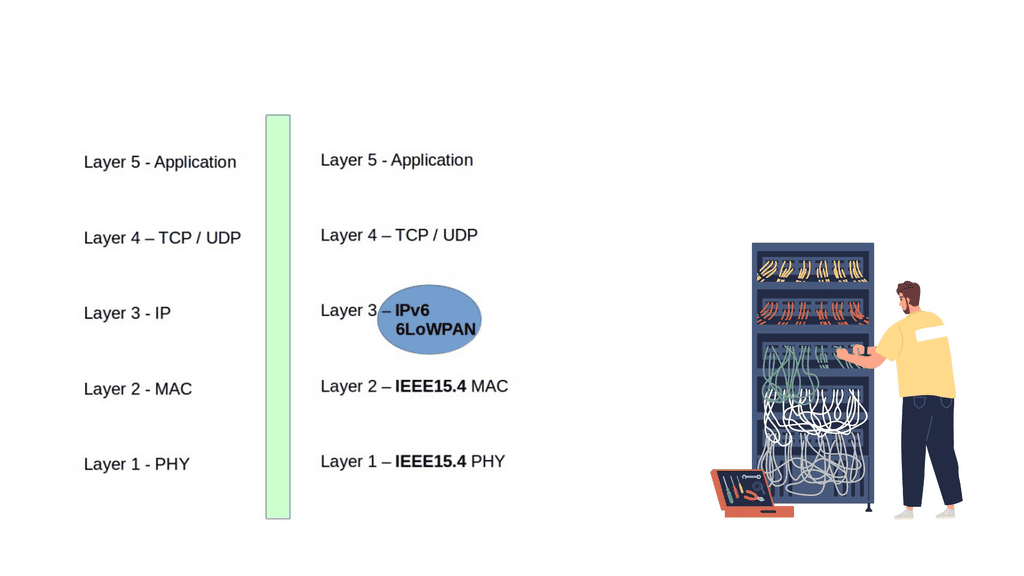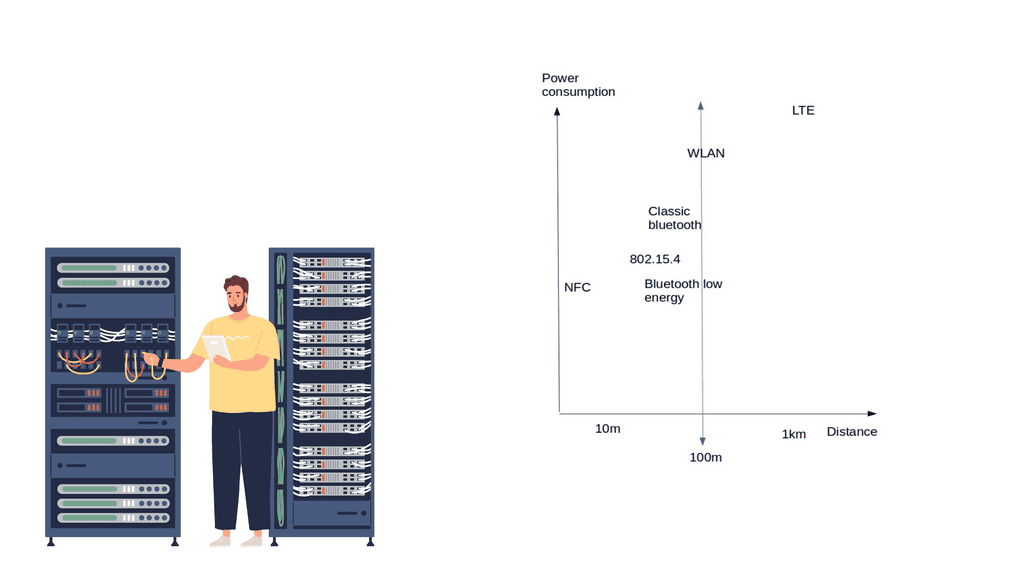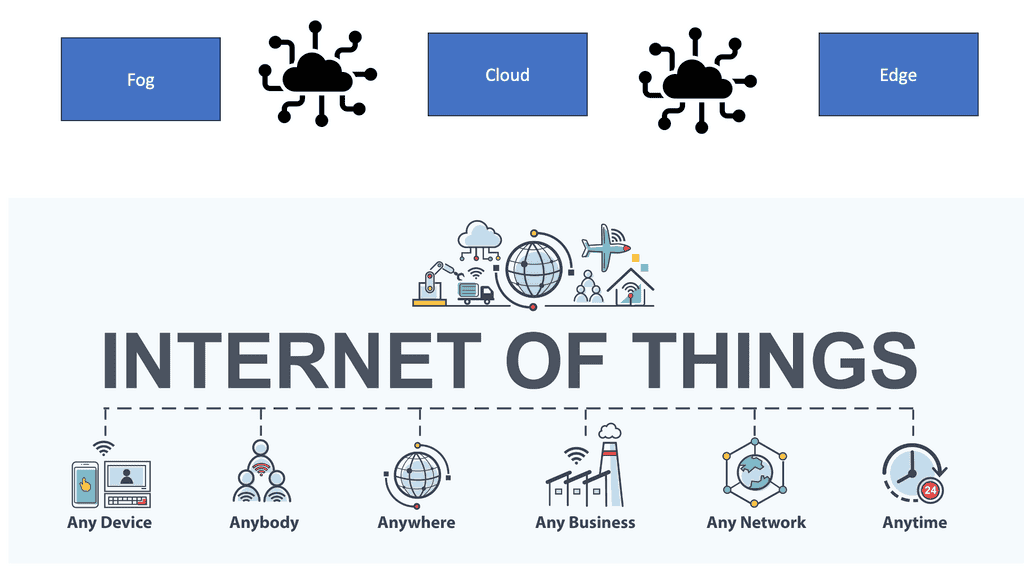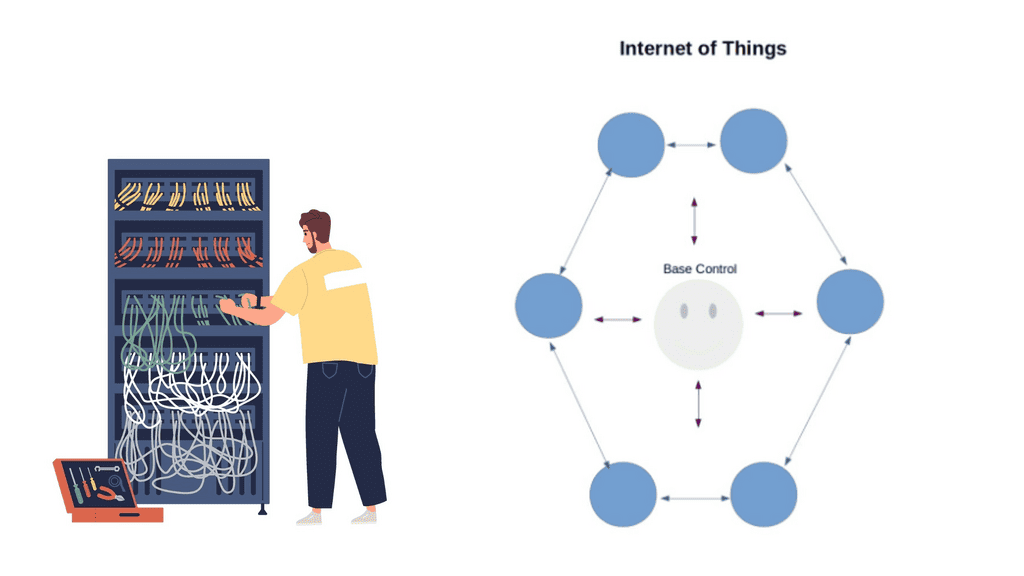6LoWPAN Range with 6LoWPAN IoT
In the rapidly evolving world of the Internet of Things (IoT), reliable and efficient wireless connectivity is crucial. One technology that has gained significant attention in recent years is 6LoWPAN (IPv6 over Low-Power Wireless Personal Area Network). In this blog post, we will delve into the concept of the 6LoWPAN range and its implications for IoT deployments.
The range of wireless technology refers to the maximum distance over which devices can communicate with each other reliably. 6LoWPAN, a low-power wireless network protocol, is designed to provide connectivity over a limited range. The range of a 6LoWPAN network typically depends on various factors such as the transmission power, environment, and any obstacles.
Highlights: 6LoWPAN Range
- The Role of Connectivity Requirements
Consistent connectivity with the Internet of Things access technologies locally among IoT things and to the remote cloud or on-premise IoT platforms requires having the correct type of network infrastructure that suits the characteristics of IoT devices. Expensive, and we are seeing the deployment of both short-range Low Power and long-range Low Power networks in the IoT world. 6LoWPAN IoT, IPv6, and 6LoWPAN range compression and IPv6 fragmentation techniques enable IP on even the smallest devices offering direct IP addressing and a NAT-free world.
- New Design Approaches
Depending on device requirements and characteristics, the Internet of Things networking design might consist of several “type” centric design approaches. For example, we can have thing-centric, gateway-centric, smartphone-centric, and cloud-centric designs that are selected based on IoT device requirements.
Some processing may need to be performed locally if slow and expensive satellite links result in a thing-centric design. Other device types require local gateway support, while others communicate directly to the IoT platform.
Before you proceed, you may find the following helpful post for pre-information:
6LoWPAN IoT. |
|
Back to basics with IoT
The two dominant modern network architectures are cloud computing and the Internet of Things (IoT), sometimes called fog computing. The future Internet will involve many IoT objects that use standard communications architectures to provide services to end users.
It is envisioned that tens of billions of such devices will be interconnected. This will introduce interactions between the physical world and computing, digital content, analysis, applications, and services. This resulting networking paradigm is called the Internet of Things (IoT).
Factors Influencing 6LoWPAN Range:
a) Transmission Power: The transmission power of a 6LoWPAN device plays a significant role in determining its range. Higher transmission power allows devices to communicate over considerable distances and consumes more energy, impacting battery life.
b) Environment: The physical environment in which 6LoWPAN devices operate can affect their effective range. Obstacles such as walls, buildings, and interference from other wireless devices can attenuate the signal strength, reducing the range.
c) Antenna Design: The design and placement of antennas in 6LoWPAN devices can impact their range. Optimized antenna designs can enhance signal propagation and improve the overall range of the network.
Extending 6LoWPAN Range:
While 6LoWPAN networks have a limited range by design, there are several techniques to extend their coverage:
a) Mesh Topology: Implementing a mesh topology allows devices to relay messages to each other, expanding the network’s coverage. By relaying packets, devices can communicate beyond their direct range, effectively extending the overall range of the network.
b) Signal Amplification: Using signal amplification techniques, such as increasing the transmission power or employing external amplifiers, can boost the signal strength and extend the range of 6LoWPAN devices.
c) Repeater Nodes: Deploying additional repeater nodes within the network can help bridge communication gaps and extend the range. These nodes receive and retransmit packets, allowing devices to communicate with each other even when they are out of direct range.
Considerations for 6LoWPAN Range Optimization:
To optimize the range of a 6LoWPAN network, it is essential to consider the following factors:
a) Power Consumption: Increasing the transmission power to extend the range can lead to higher power consumption. Balancing range and power efficiency is essential to ensure optimal device performance and battery life.
b) Network Density: The number of devices within a 6LoWPAN network can impact the overall range. Higher device density may require additional repeater nodes or signal amplification to maintain effective communication across the network.
c) Environmental Constraints: Understanding the physical environment and any potential obstacles is crucial for optimizing the range of a 6LoWPAN network. Conducting site surveys and considering the placement of devices and repeaters can significantly enhance network coverage.
6LoWPAN Range: IoT Networking
The design of Internet of Things networking is device-type-driven and depends on the memory and processing power of the things. They drive a new network paradigm, a paradigm no longer well-defined with boundaries. It is dynamic and extended to the edge where IoT devices are located. It is no longer static as some of these devices and sensors move and sleep as required.
There are many factors to consider when selecting wireless infrastructure. You need to take into consideration 1) range, 2) power consumption and battery life, 3) data requirements, 4) security, and 5) endpoint and operational costs of IoT devices. These characteristics will dictate the type of network and may even result in a combination of technologies. Similar to how applications drive the network design in a non-IoT network, the IoT device and the application it serves drives the network design in the IoT atmosphere.
Cellular connectivity is the most widely deployed network. Still, the Internet of Things networking is expensive per node and has poor battery life as there will be way more IoT endpoints than cellular phones. New types of networks are needed.
Cellular networks are not agile enough, and provisioning takes ages. Smart IoT devices require more signaling than what traditional cellular networks are used to carrying. Devices require bi-directional signaling between each other or remote servers, which needs to be reliable. Reach is also a challenge to connect up far-flung IoT devices.
- Two types of networks are commonly deployed in the IoT world – short-range Low Power and long-range Low Power networks.
Internet of Things networking: Short-range low power
New devices, data types, and traffic profiles result in new access networks for the “last 100 meters of connectivity”. As a result, we see the introduction of many different types of technologies at this layer – Z-Wave, ZigBee, Bluetooth, IEEE 802.15.4, 6LoWPAN Range, RFID, Edge, and Near Field Communication ( NFC ).
Devices that live on short-range networks have particular characteristics:
- Low cost.
- With low power consumption, energy is potentially harvested from another power source.
- Short range with the potential for the extension with a router or repeater.
These networks usually offer a range of around 10 – 100 meters, 5 – 10 years of battery life, low bandwidth requirements, and low endpoint costs. Potentially consist of 100 – 150 adjacent devices, usually deployed in the smart home/office space.
The topologies include point-to-point, star, and mesh. A gateway device usually acts as a bridge or interface linking the outside network to the internal short-range network. A gateway could be as simple as a smartphone / mobile device. For example, a smartphone could be the temporary gateway when it approaches the sensor/device in an access control system.
Short-range low-power technologies
-
- Bluetooth low energy ( BLE ) or Bluetooth smart
Bluetooth Smart has the most extensive ecosystem with widespread smartphone integration. It fits into many sectors, including home and building, health and fitness, security, and remote control. Most smart devices make use of Bluetooth technology, including adult toys.
That being said, when using Bluetooth technology, there is always a risk of being targeted by hackers. In recent years, more and more people have started to worry about Bluetooth toys getting hacked.
Nonetheless, as long as people take necessary precautions, their chances of getting hacked are relatively low. Moreover, Bluetooth has the potential for less power consumption than IEEE 802.15.4 and looks strong as a leader in the last 100 meters.
Recently, with Bluetooth 4.2, BLE devices can directly access the Internet with 6LoWPAN IoT. It has a similar range to that of Classic Bluetooth and has additional functionality designed to reduce power consumption. In addition, BLE is reliable with its support for Adaptive Frequency Hopping ( AFH ).
The data rate and range depict if you can use BLE or not. If your application sends small chunks of data, you’re fine, but if you want to send large file transfers, you should look for an alternative technology. The range is suited for 50 – 150 meters with a max data rate of 1 Mbps.
6LoWPAN IoT
6LoWPAN Range: IEEE 802.15.4 wireless
IEEE 802.15.4 will be the niche wireless technology of the future. It already has an established home and building automation base—the IEEE 802.15.4 market targets small battery-powered devices that wake up for some time and return to sleep. IEEE 802.15.4 consists of low-bit, low-power, and low costs endpoints. The main emphasis is on low-cost communication between nearby devices.
It is only the physical and MAC layers and doesn’t provide anything on top of that. This is where for example, ZigBee and 6LoWPAN IoT come to play. Specifications such as 6LoWPAN IoT and ZigBee are built on the IEEE 802.15.4 standard and add additional functionality to the upper layers. 15.4 has simple addressing with no routing. It has star and peer-to-peer topologies. Mesh topologies are supported, but you must add layers not defined by default in IEEE.
ZigBee
ZigBee is suited for applications with infrequent data transfers of around 250 kbps with a low range between 10 – 100m. It’s a very low-cost and straightforward network than Bluetooth and Wi-Fi. However, it is a proprietary solution, and there is no ZigBee support for the Linux kernel resulting in a significant performance hit for userspace interaction.
This is one of the reasons why the 6LoWPAN range would be a better option, which also runs on top of IEEE 802.15.4. NFC ( Near Field Communication ) has low power but is very short-range, enabling a simple 2-way interaction. An example would be a contactless payment transaction. WLAN (Wi-Fi) has a large ecosystem but high power consumption.
Low-power wide-area network (LPWAN) or low-power network (LPN)
BLE, ZigBee, and Wi-Fi are not designed for long-range performance, and traditional Cellular networks are costly and consume much power. On the other hand, low Power networks are a class of wireless networks consisting of constrained devices in processing power, memory, and battery life. The device battery’s length depends on the power consumption, and low power consumption enables devices to last up to 10 years on a battery.
- Receiver Sensitivity
When a device transmits a signal, it needs energy from the receiving side to detect it. As always, a certain amount of power is lost during transmission. One of the reasons for LPWAN’s long reach is high receiver sensitivity. Receiver sensitivities in LPWAN operate at -130 dBm; typically, in other wireless technologies, this would be 90 – 110 dBm. Receiver sensitivity operating at -130 can detect 10,000 times quicker than at -90.
It offers long-range communication at a meager bit rate. LPWAN has a much longer range than Wi-Fi and more cost-effective cellular networks. Each node can be up to 10 km from the gateway. Data rates are low. Usually, only between 20 – 256 bytes per message are sent daily.
These networks are optimized for specific types of data transfers consisting of small, intermittent data blocks. Not all IoT applications transmit large amounts of data. For example, a parking garage sensor only transmits when a parking space is occupied or empty. Devices within these networks are generally cheap at £5 per module and optimized for low throughput.
IPv6 and IoT
All the emerging IoT standards are moving towards IPv6 and 6LoWPAN IoT. There is a considerable adoption of IPv6 in the last mile of connectivity. Deploying IPv6 brings many benefits. However, take note of IPv6 attacks. It overcomes problems with NAT providing proper end-to-end connectivity and directly addressing end hosts. It has mobility support and stateless address autoconfiguration.
The fundamental problem with NAT is performance. Performance gets very painful when everything is NAT’d for an IoT device to be contacted from the outside. NAT also breaks flexibility in networking as an IoT device can only be accessed if it first contacts.
Not only does this break proper end-to-end connectivity, but sharing IoT infrastructure among providers is challenging. We need a NAT-free scalable network that IPv4 cannot offer, a solution that does not require gateways or translation devices that only add to network complexity.
It’s far better to use IPv6 and 6LowPANn IoT than proprietary protocols. It’s proven to work, and we have much operational experience. With the use of 6LoWPAN, IPv6 can be compressed into a couple of bytes of data which is helpful for small and power-constrained devices.
6LoWPAN Range on IEEE 802.15.4 networks
6LoWPAN is all about transmitting IP over IEEE 802.15.4 networks. As the name suggests, its IPv6 over LoWPAN ( IEEE 802.15.4 ) enables IP to the smallest devices. Rather than using an IoT application protocol like Bluetooth and ZigBee, 6LoWPAN IoT is a network layer protocol with frequency band and physical layer freedom. It’s suitable for small nodes ( 10 kilobytes of RAM ) and sensor networks for machine-to-machine communication.
15.4 has four types of frames 1) Beacon, 2) MAC command, 3) ACK, and 4) Data – this is where the IPv6 RA packets must be carried.
6LoWPAN is an adaption layer between the data link and network layer ( RFC 4944 ). It becomes part of the network layer. So, instead of using IPv6 natively on the MAC layer, they have a shim layer that adapts between the data and network layer. As a network layer protocol, it doesn’t provide any functionality above layer 3. As a result, it is often used in conjunction with Constrained Application protocols ( CoAP ) and MQTT ( machine-to-machine (M2M)/”Internet of Things ) protocols.

6LoWPAN Range: Header compression and fragmentation
IPv6 allows a maximum packet size of 1280 bytes. However, the maximum transfer size 802.15.4 is a 127-byte MTU, meaning a complete IPv6 packet does not fit in a 15.4 frame. By default, a 127-byte 15.4 frame only leaves 33 bytes for the payload. This small frame-size support is one of the reasons why deploying a full IP stack would be challenging. A couple of things must be done to make this work and compliant with IPv6 standards. To use IPv6, we need to adjust header overhead and adaptations for MTU size.
The first thing we must do is bring fragmentation back to IPv6. To allow such packets, we define a fragmentation scheme. The 11-bit fragmentation header allows for 2048 byte packet size with fragmentation. However, many tables in the IPv6 header are static, and you might not need them. So the version will always be 0, and so will the traffic class and flow label.
Finally, for the Internet of Things networking, remember that the entire TCP/IP stack is not one size fits all and would certainly reach hardware limitations on small devices. It’s better to use UDP ( DTLS ) instead of TCP. Packets loss on the lossy network may invoke additional latencies while TCP carries out retransmissions. You can still use TCP, but it won’t be optimized, and the headers will not be compressed.
Conclusion:
6LoWPAN technology offers a low-power and cost-effective solution for IoT deployments. By understanding the factors influencing its range, implementing range-extending techniques, and optimizing network parameters, organizations can ensure reliable connectivity and seamless communication within their IoT ecosystems. As the IoT landscape continues to evolve, 6LoWPAN will remain a vital connectivity option, enabling innovative applications and driving the growth of the IoT industry.





